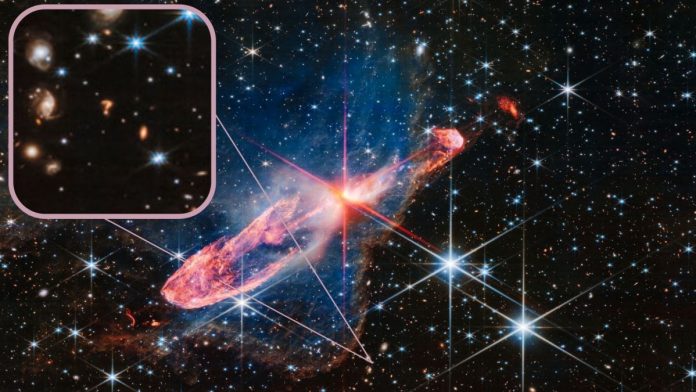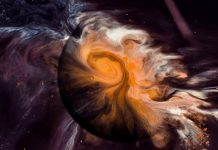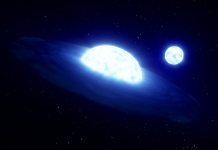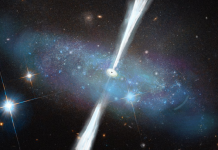
In a fascinating celestial spectacle, the cutting-edge James Webb Space Telescope (JWST) has recently unveiled an enigmatic occurrence resembling a luminous cosmic question mark amidst the cosmos
On July 26, a novel near-infrared image showcased a pair of youthful stars named Herbig-Haro 46/47, situated within the Vela constellation of the Milky Way galaxy, approximately 1,470 light-years away.
This captivating image marked a collaborative effort between ground-based and space telescopes.
Unveiling the JWST and its observation
While the two stars, engaged in an intricate dance of formation and orbit, had been under observation since the 1950s, the unparalleled sensitivity of the Webb telescope provided the most complicated and high-resolution depiction of them to date.
This groundbreaking NASA telescope possesses the unique capability to perceive extended wavelengths, thus offering an unprecedented glimpse into the origins of our cosmos.
Cosmic question mark: An enigma amidst the stars
The perplexing appearance of a cosmic question mark in the background of this image has intrigued and puzzled the scientific community.
As an instrument designed to uncover the universe’s mysteries, the Webb telescope becomes a catalyst for a new cosmic riddle.
The question mark’s peculiar shape and location spark intriguing theories among scientists. Dr Matt Caplan, an assistant professor of physics at Illinois State University, dismisses the possibility of it being a conventional star due to the absence of typical spikes in its illumination.
This curiosity lies beyond the confines of our Milky Way, implying a potential merger of distant galaxies.
Cosmic dances and galactic collisions
Christopher Britt, an education and outreach scientist at the Space Telescope Science Institute, speculates that the question mark’s form could stem from the gravitational interaction of galaxies.
As galaxies merge and evolve, their collisions can lead to distorted shapes, possibly resembling this captivating cosmic question mark.
An ancient script written in stars
Although this occurrence appears to be a unique sighting, history bears witness to galaxies embracing similar forms due to mergers. For instance, the Antennae Galaxies etched a reversed version of this cosmic emblem in the Corvus constellation. Galactic interactions of this nature are recurrent, sculpting the cosmos’ tapestry.
While answers remain elusive, the uncertainty surrounding celestial events reflects the constant flux and evolution of the universe.
The intriguing dance of our Milky Way and the Andromeda galaxy, slated to unite in approximately 4 billion years, echoes the narrative of cosmic integration.
James Webb Telescope unveiles the unknown
Delving deeper into the cosmic enigma requires gathering more spectroscopic data. Such insights illuminate essential facets, including the object’s composition and distance.
While this endeavour might not attract significant attention akin to a serendipitous discovery, the essence of scientific exploration lies in unravelling the unknown.
In the grand tapestry of space, the James Webb Space Telescope’s serendipitous encounter with a cosmic question mark adds another wonder to the universe’s intricate narrative.













